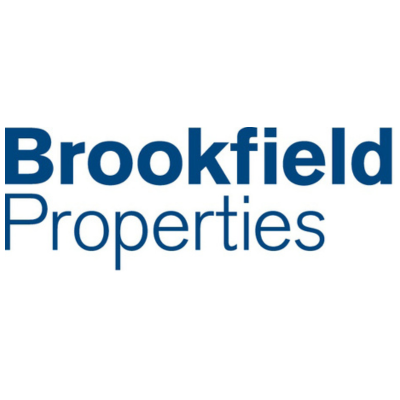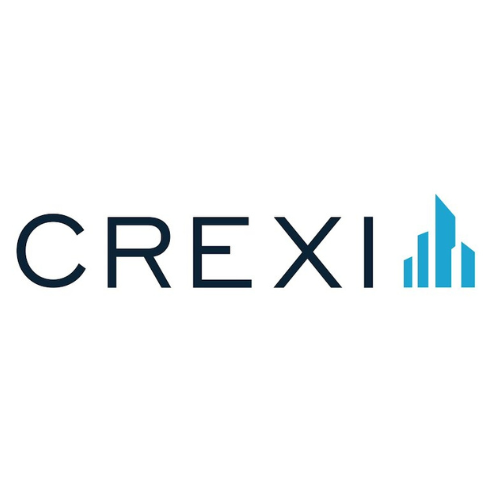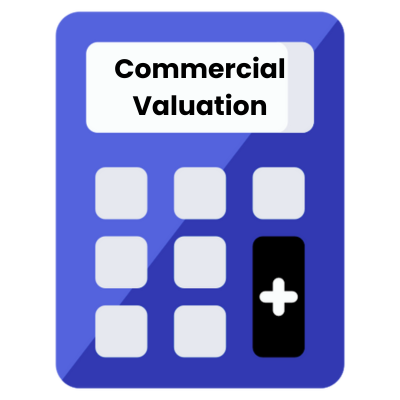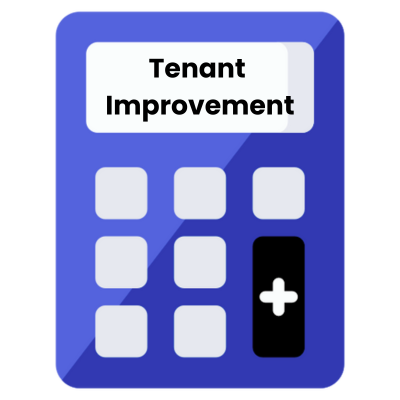Last Updated: April 2024

Commercial real estate investing is an advanced strategy that involves acquiring and managing non-residential properties, such as office buildings, retail spaces, warehouses, and multi-use complexes, for income generation. With the potential for significantly higher returns, this approach requires a comprehensive understanding of commerce, complex financing, property management, and tenant leasing strategies.
On This Page
- What is Commercial Real Estate Investing?
- 9 Ways to Invest in Commercial Real Estate
- How to Buy a Commercial Rental Property
- Commercial Real Estate Investing Tools
- Commercial Real Estate Investing Calculators
- Pros and Cons of Investing in Commercial Real Estate
- Commercial Properties vs Other Rental Real Estate Asset Classes
What is Commercial Real Estate Investing?
Commercial Real Estate Investing Definition
Commercial Real Estate (CRE) Investing refers to the act of allocating financial resources into properties that are primarily used for business purposes. This includes assets like office buildings, retail centers, warehouses, and other property types where businesses operate or generate rental income.
Commercial Real Estate Investing Explained
Commercial real estate investing is about buying and selling properties that businesses occupy or use to generate profit. Investors can earn income from these properties through rents, business operations, or profit from the appreciation of the property’s value over time. The key is to ensure that the right businesses (or business uses) are occupying the property in a way that financially beneficial for them and the property’s ownership.
9 Ways to Invest in Commercial Real Estate
Commercial Property Direct Ownership
Direct ownership in commercial real estate involves an individual or entity purchasing a property directly and becoming the legal owner. This hands-on approach offers investors complete control over the property, from tenant selection to commercial property management duties. As a result, they stand to gain the entirety of profits from rents and potential appreciation but also shoulder all responsibilities and risks associated with property ownership.
Developing a Commercial Property
Taking on a commercial property development project means acquiring land or an existing structure and transforming or enhancing it for a specific business purpose. This can range from erecting a new office building to refurbishing an old warehouse. Investors in this realm can achieve substantial returns on their investment, especially if they identify and capitalize on emerging market trends, but they also take on the complexities and uncertainties of construction and development.
BRRRR a Commercial Property
The BRRRR method—Buy, Rehab, Rent, Refinance, Repeat—applied to commercial real estate focuses on acquiring undervalued properties, making necessary improvements, renting them out, and then refinancing to pull out equity. This strategy allows investors to potentially recoup their initial investment quickly while retaining a rent-generating asset. However, it requires a keen eye for valuation, understanding of the refurbishment costs, and a knack for timely refinancing.
Commercial Real Estate Note Investing
Instead of owning the property directly, investors can buy or invest in the debt secured by commercial properties. By doing this, they essentially step into the lender’s shoes, earning interest on the note and having the property as collateral. This avenue offers a way to benefit from commercial real estate without the responsibilities of direct ownership, though it does come with the risk of borrower default.
Commercial Real Estate Companies
Several large commercial rental property companies have redefined the dynamics of this asset class. Their size and influence not only shape market trends but also impact rental standards and practices nationwide. Investing in them, where possible, can be a great way to gain exposure to this asset class.
Commercial Property Sale Leaseback
A sale leaseback is a financial transaction in which a company sells its commercial property and immediately leases it back from the buyer. This strategy allows the company to free up capital tied to real estate assets while retaining the right to use the property, typically under a long-term lease agreement. For investors, sale leasebacks present an opportunity to acquire a property with a secured tenant, ensuring a steady stream of rental income.
Triple Net (NNN) Investing
Triple Net Investing centers on properties where tenants, often businesses, agree to pay not only the rent but also the property’s taxes, insurance, and maintenance (the three “nets”). This setup often results in a more predictable and low-touch income stream for the property owner. With NNN leases, investors can enjoy consistent returns with fewer management responsibilities but must ensure they have reliable long-term tenants.
Commercial Real Estate Syndication
Syndication allows multiple investors to pool their financial resources to invest in properties and projects larger than they might afford individually. These collective investments, often structured as limited partnerships, offer investors a share of the property’s returns. While syndication can amplify purchasing power and diversify risk, it also involves trusting the expertise and integrity of the syndicate’s management team.
Commercial Real Estate Stocks
Commercial real estate stocks and REITs are publicly traded companies that generate their income predominantly through commercial real estate investing, ownership, and management. Most commercial real estate stocks are REITs, which allow investors to gain exposure to commercial real estate markets and earn dividends from the company’s income. This method provides liquidity and accessibility but also comes with volatility.
How to Buy a Commercial Rental Property
Buying commercial real estate is a sophisticated venture that requires strategic planning, in-depth research, and meticulous execution. Understanding the comprehensive process from start to finish is essential to ensuring a profitable and sound investment.
The Commercial Purchase Process
- Self-Assessment: Before venturing into the commercial real estate market, investors should introspectively analyze their understanding of rental property finance, personal financial standing, risk tolerance, and investing objectives to ensure alignment with potential investment opportunities.
- Assembling Your Real Estate Team: As commercial transactions can be intricate, assembling a seasoned team—including a commercial broker, attorney, and financial experts—can provide invaluable insights and facilitate smoother deal negotiations and closings.
- Market and Location Analysis: Choosing the right market and location is pivotal in commercial real estate; investors should study market trends, growth potential, and economic business shifts to ensure the chosen area aligns with their investment goals.
- Key Features to Look for in Potential Commercial Properties: Each commercial property type has unique features; investors should focus on attributes like property condition, traffic counts, buildout, tenant profiles, and vacancy rates to gauge investment potential.
- Evaluating Financing Options for Acquiring Properties: Understanding and securing the right commercial financing structure is vital; investors should consider factors such as interest rates, loan terms, and down payment requirements when evaluating lending options.
- Making Offers and Negotiating Purchase Terms: Drafting a compelling offer, while understanding the nuances of commercial property valuations, is a crucial step; negotiations should be strategic to secure favorable terms and ensure the property meets investment benchmarks. It is usually best to use a commercial broker for this step.
- Commercial Property Inspections, Appraisals, and Due Diligence: Beyond the basic property inspection, comprehensive due diligence—including title searches, zoning laws, and environmental assessments—ensures that the investor is making an informed decision devoid of latent risks.
- Closing the Deal: Finalizing the purchase involves a meticulous review of all contract terms, ensuring financing is in place, and adhering to any stipulated conditions to successfully close the deal and take ownership of the commercial asset.
Commercial Property Management
- Acquiring and Screening Tenants: In the realm of commercial real estate, selecting the right tenants involves thorough background checks, financial assessments, and understanding the prospective tenant’s business viability to ensure long-term occupancy and consistent rental income.
- Negotiating Leases and Rent Collection: Drafting comprehensive commercial lease agreements, which detail the terms, responsibilities, and rental rates, is pivotal for clarity and smooth rent collection, ensuring both parties uphold their end of the agreement.
- Property Maintenance, Repairs, and Upgrades: For the longevity of a commercial rental property and tenant satisfaction, investors should prioritize regular maintenance, address necessary repairs promptly, and consider periodic upgrades to enhance property value and appeal. Employing a commercial property management software can help streamline maintenance and tenant relation management.
Financial Management and Performance Analysis
- Understanding and Calculating Cash Flow, Expenses, and Net Operating Income: For successful commercial rental property investments, it’s crucial to accurately calculate cash flow, diligently track expenses, and review all financial statements to gauge the property’s financial health.
- Assessing Return on Investment: To determine the profitability of a commercial rental property, investors must consistently evaluate the return on investment (ROI), factoring in rental income, property appreciation, and associated costs.
- Tax Considerations and Benefits: Navigating the complex tax landscape for commercial rental properties allows investors to leverage tax breaks, depreciation, and other financial incentives such as cost segregation, opportunity zones, and the real estate professional tax designation.
Scaling and Diversification in Commercial Real Estate Investing
- Strategies for Expanding Your Investment Portfolio: Actively seeking growth opportunities, such as targeting emerging markets or underperforming assets, can effectively scale a commercial rental property portfolio.
- Diversifying Your Portfolio with Different Types of Commercial Properties: By integrating a mix of retail, office, industrial, and other types of commercial properties, investors can mitigate risks and capture diverse income streams in the commercial rental sector.
- Exit Strategies: Selling, Refinancing, and 1031 Exchanges: Strategically exiting a commercial rental property, whether through sales, refinancing, or utilizing 1031 exchanges, ensures capital preservation and can maximize returns on investment.
Commercial Real Estate Investing Tools
The #1 Rental Property Newsletter
Once a month, we send out an exclusive Rental Property Market Update with top stories, current mortgage rates, building products, and more. No spam and unsubscribe anytime.


Commercial Real Estate Investing Calculators
Pros and Cons of Investing in Commercial Real Estate
There are many factors to consider when determining how to invest in rental real estate, specifically commercial rental properties. The following is a comprehensive list of the pros and cons you need to know before investing in commercial rental properties.
Pros of Commercial Rental Investing
- Greater Income Potential – More units equal more opportunities to generate more revenue. Commercial properties also allow for alternative revenue sources such as advertising space (Billboards), rooftop cellular sites, parking lot rentals, vending & ATM machine rent, and more.
- Longer Tenancy – Commercial tenants normally sign multi-year leases ranging from 3-5 Years and sometimes have an “option” to add on additional years. This gives landlords greater long term predictability for property cash flow and stability.
- Less Maintenance Responsibilities – Most commercial leases require that tenants handle more maintenance responsibilities. A lease type called “Triple Net – NNN” is the most ideal for Landlords, in which tenants are responsible for 100% of maintenance (with a few exceptions).
- Professional Relationships – Commercial tenants are generally business owners whose best interest is to keep the property welcoming and in good shape. These interests generally align with the owners, resulting in a well taken care of property.
- More Flexibility of Lease Terms – Since most businesses are unique, most commercial leases are tailored to each tenant. Maybe the tenant is a laundromat who uses a lot of water. In this case, you could write the lease so that this one tenant pays for the entire property’s water bill.
Cons of Commercial Rental Investing
- Longer Vacancy Time – While apartment seekers are forever plentiful, renting a commercial space usually takes longer to find the perfect tenant. Depending on the market and property, this process can range from several months to several years.
- Greater Overhead Costs – Business tenants expect a professional interaction with their landlord. As such, there are additional costs to operate commercial properties such as a property management office, parking lot cleaning, admin personnel, licensing & permit fees, and more.
- Bigger Investment – The typical down payment to acquire a piece of commercial rental real estate is much greater than a standard home. The down payment for commercial properties can range from 20-50% and loan interest rates for commercial properties are usually higher than other types of rental properties .
- Professional Services – Since there is more at stake in commercial rentals, it is always best practice to avoid DIY (Do it Yourself) and use professionals. These can range from commercial real estate brokers for vacancy leasing, to licensed and bonded tradesmen for repairs.
- Greater Liability – Commercial rental real estate is generally intended for public use. With greater use of people regularly interacting with the property, also comes greater probability for someone to get hurt or damage the property (both intentionally or unintentionally).
Search Rental Real Estate
Try searching out site for hundreds of rental property topics ranging from property management, investor tool reviews, investment research, and more.
Commercial Properties vs Other Rental Real Estate Asset Classes
Commercial real estate investing offers a unique set of advantages and challenges compared to other popular rental real estate asset classes. By understanding the differences in terms of investment scale, management requirements, and potential returns, investors can make more informed decisions tailored to their goals.
| Criteria | Commercial Real Estate | Single Family | Multifamily | Vacation Rentals |
|---|---|---|---|---|
| Scale of Investment | Typically higher due to property size and value | Lower initial investment, ideal for individual investors | Medium to high depending on the unit count | Medium initial investment with potential for high returns in tourist hotspots |
| Management Intensity | High, often requires a professional management team | Low to medium; can be managed individually or with a property manager | High, usually requires a property management team | High during peak seasons; requires continuous marketing and maintenance |
| Liquidity | Relatively low; longer sales cycle and fewer potential buyers | Higher due to broader market of potential homeowners and investors | Medium; influenced by market demand and property location | Medium to high, depending on property location and market conditions |
| Risk Profile | Medium to high; influenced by economic cycles and tenant industries | Low to medium; steady rental income and appreciating asset | Medium; benefits from multiple tenants mitigating vacancy risks | High; seasonal demand and reliant on tourism and economic conditions |
| Potential ROI | High potential, especially in prime locations with long-term leases | Steady and reliable returns with potential for appreciation | High, especially with value-add strategies and efficient management | Highly variable; peak seasons can offer exceptional returns |
| Tenant Duration | Longer-term leases (often multi-year) offer stability | Typically 1-year leases, potential for long-term tenants | 6-month to 1-year leases common; potential for long-term tenants | Short-term stays ranging from days to weeks |
| Market Sensitivity | Sensitive to economic shifts affecting businesses | Moderately stable but can be influenced by housing market trends | Stable with continuous demand; influenced by housing market trends | Highly sensitive to economic, environmental, and travel industry changes |
More Real Estate Investing Asset Types
About the Author


Ryan Nelson
I’m an investor, real estate developer, and property manager with hands-on experience in all types of real estate from single family homes up to hundreds of thousands of square feet of commercial real estate. RentalRealEstate is my mission to create the ultimate real estate investor platform for expert resources, reviews and tools. Learn more about my story.
Disclaimer: The information provided on this website does not, and is not intended to, constitute legal and/or financial advice. As such, all information, content, and materials available on this site are for general informational purposes only. Please review our Editorial Standards for more info.




















